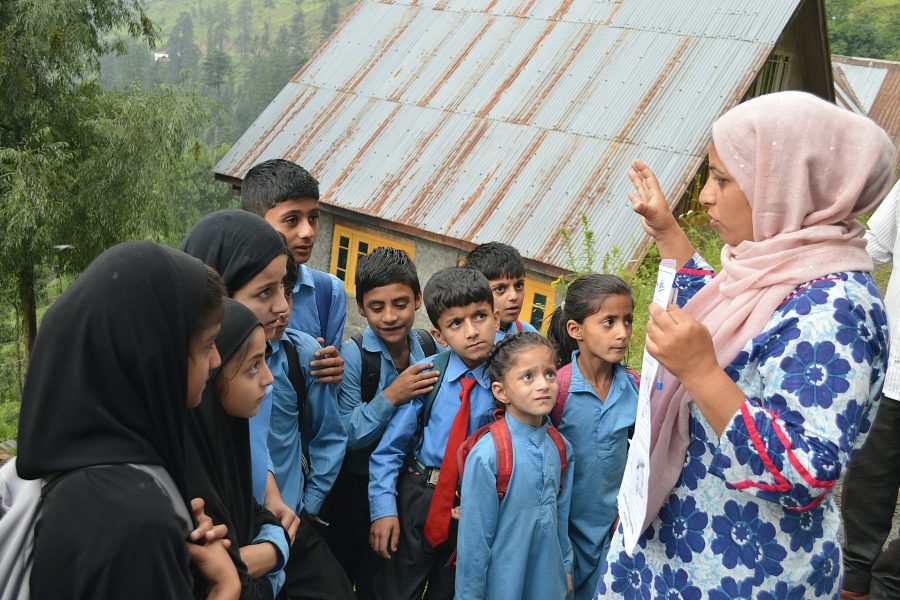Studies and work related to nature and wildlife conservation have been propelled forward through the study of arguably THE most important tributary of biology – ecology. However, in order for people to fully fathom what ecology means, a breakdown of the entire concept vis-à-vis the subject or the field is required. There exist various aspects of this field of study that cover concepts such as ecosystems, living organisms, food chain, food web, as well non-living organisms or inorganic matter.
Not many may know that Ernst Haeckel, a German zoologist, naturalist and philosopher coined the term ‘oekologie’ or what we now call ecology, over 150 years ago. According to the word’s origin, it simply means ‘study at home’ or ‘study of home’. Vague as it may be, it mainly covered the idea of studying the complex interrelations between living organisms, and the interaction of these organisms with their surrounding environment. It is no surprise that ‘home’ here simply stands for planet Earth.

Ecology therefore makes it possible to understand planet Earth holistically. It tells us how it is necessary for both the biotic (related to living things) and abiotic (related to non-living things) factors to work together so that Nature can carry out her work.
Unless we don’t know how nature functions, we won’t be able to value her. In this regard, there are certain facets of ecology which tell us how nature works. Organisms live in ecological communities and these communities are characterised by interactions. Holistically speaking, a community is a collection of at least two different species, where the species interact with each other, as well as with non-living things. No living thing, including human beings, can live in isolation or outside of these ecological boundaries. Humans are therefore very well a part of the natural cycle.
While speaking talk about cyclic relations, we should mention the two broad types of interactions taking place among living organisms. When individuals of the same species interact with each other, it is known as intra-specific interaction. An example of intra-specific interaction would be two football teams or two badminton players going up against each other, since different individuals of the same species (Homo sapiens) are interacting or in this case, playing a match against each other. Another type of interaction is inter-specific interaction.
As the name suggests, inter-specific interaction happens between two or more different species, and can be classified into four subtypes. These are mutualism, commensalism, parasitism and predation. These fall under the category of symbiosis, which denotes interactions and dependence between organisms in some form or the other.

Mutualism benefits the species involved, where the species involved can survive without each other, but also greatly benefit if they stick together. In human terms, we can take the example of a school where a group of people running the institution is earning revenue and the students get education in return. Commensalism can be neutral, benefitting one of the species and leaving the other unaffected. For this, we can take the example of donating clothes to the needy, where the recipient is benefited, but the donor is neither benefited nor harmed. Parasitism and predation, on the other hand, can be harmful or life-taking.
Parasitism occurs when one species benefits while the other is harmed. An anthropogenic example would be human societies gnawing nature, so to speak, when they deforest jungles, while the inhabitants of the forest are all left without a home.

We all remember how we were taught the hierarchy of organisms early on in our schools. Yes, we are referring to producers and consumers. How producers such as plants produce their own food, which is then consumed by an animal such as an ant (primary consumer), which in turn is consumed by say, a frog (secondary consumer), and finally, the secondary consumer is eaten by its predator, the snake (tertiary consumer). This linear flow has another popular term – the food chain! The entire food chain is regulated by the process of predation or predatory behaviour among various species.

Therefore the understanding of Earth as a planet – which is the only strange rock known to have life – and how life has been and is functioning here, hinges solely on ecology. We established how the original word ecology simply means study at home, or study of home. Earth is our home, and the interaction of various species, plant, animal, fungi, protists, bacteria, or otherwise – among themselves and with the inorganic surroundings – can only be understood through ecology. That understanding is crucial to grasp the interconnectedness that Nature has stitched together for many geological eras and formed this intricate organic internet that spins the web of life.
For more such interesting reads on natural sciences, biology, and conservation understanding, you can subscribe to the Wildlife SOS newsletter!





